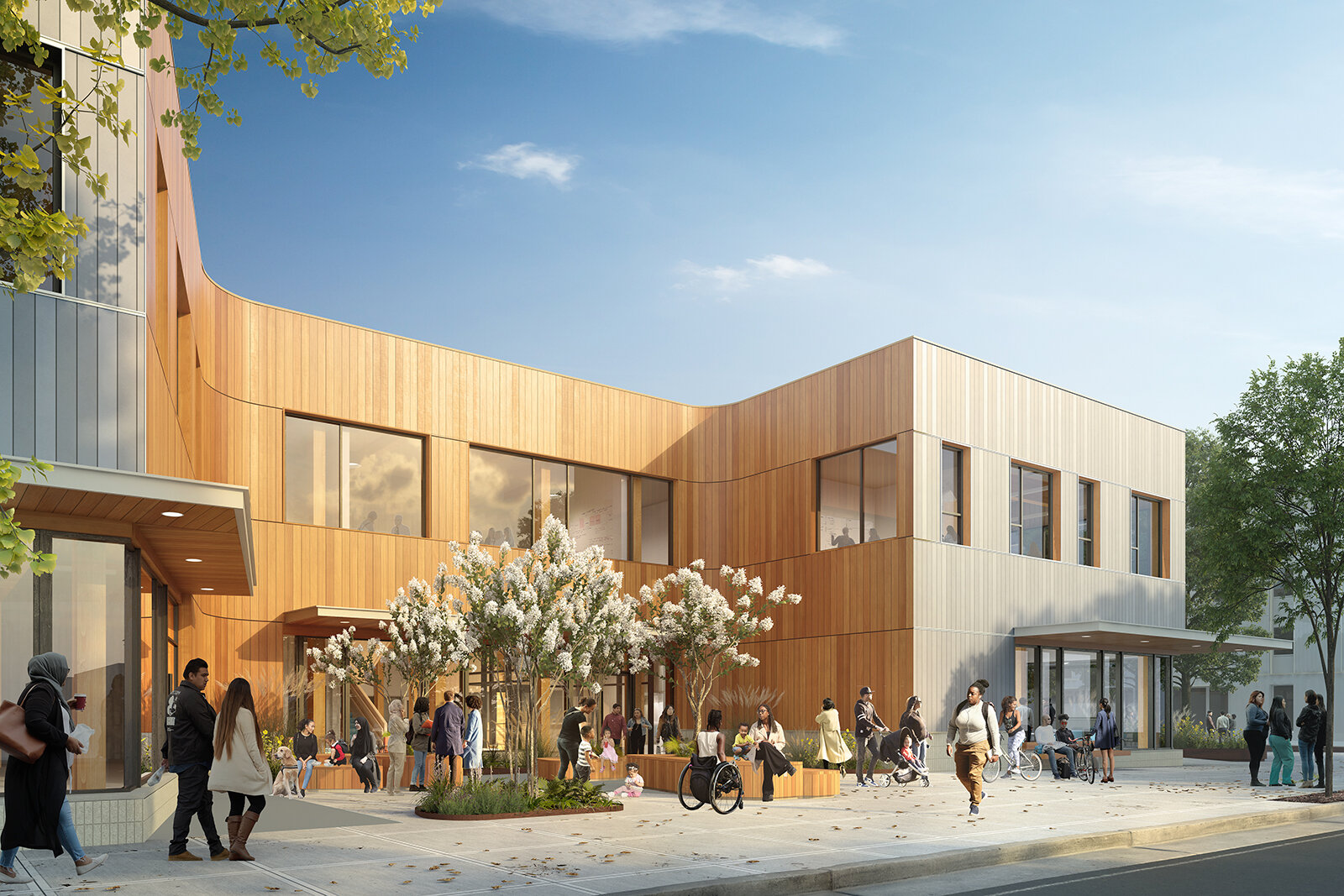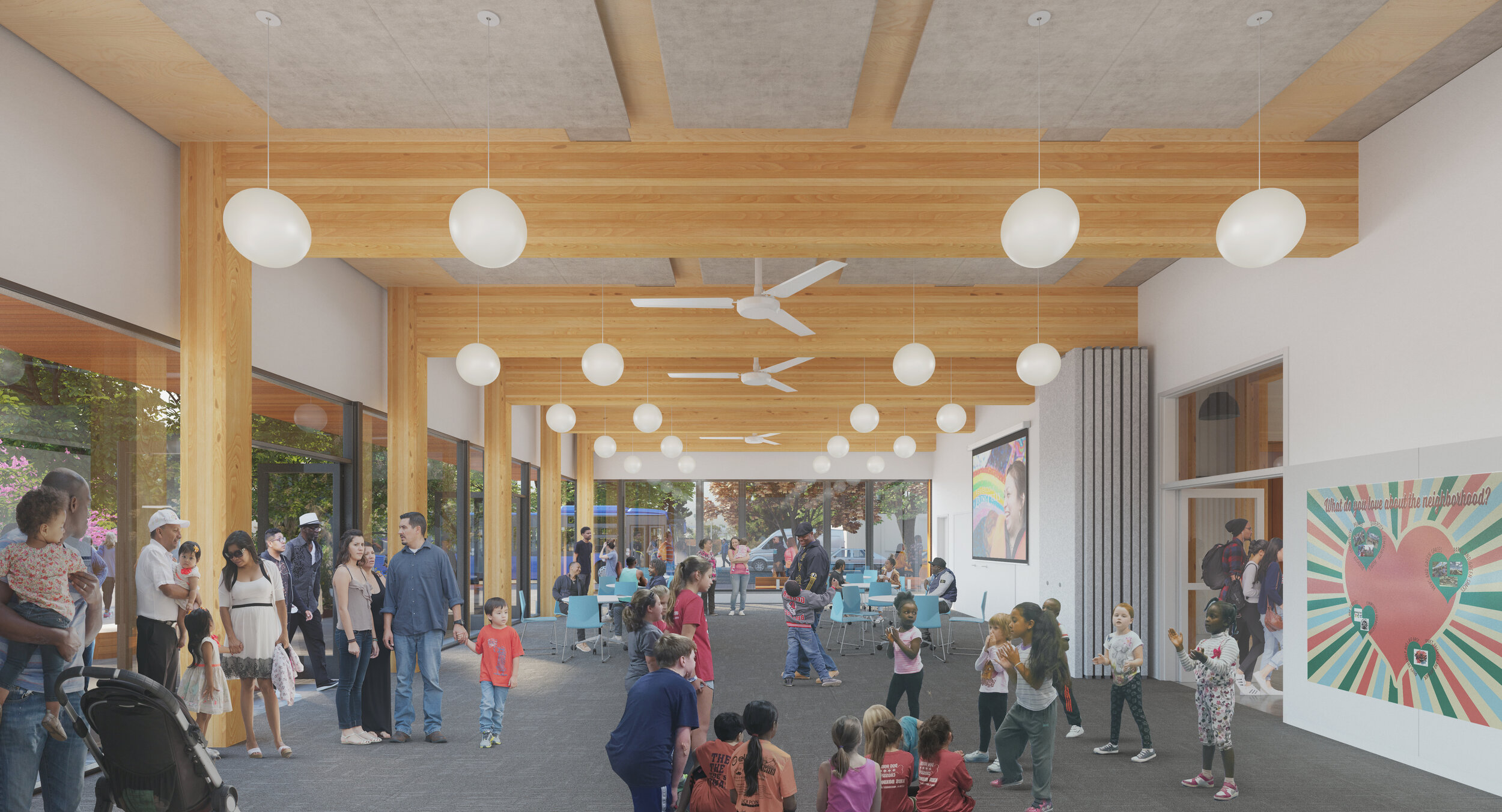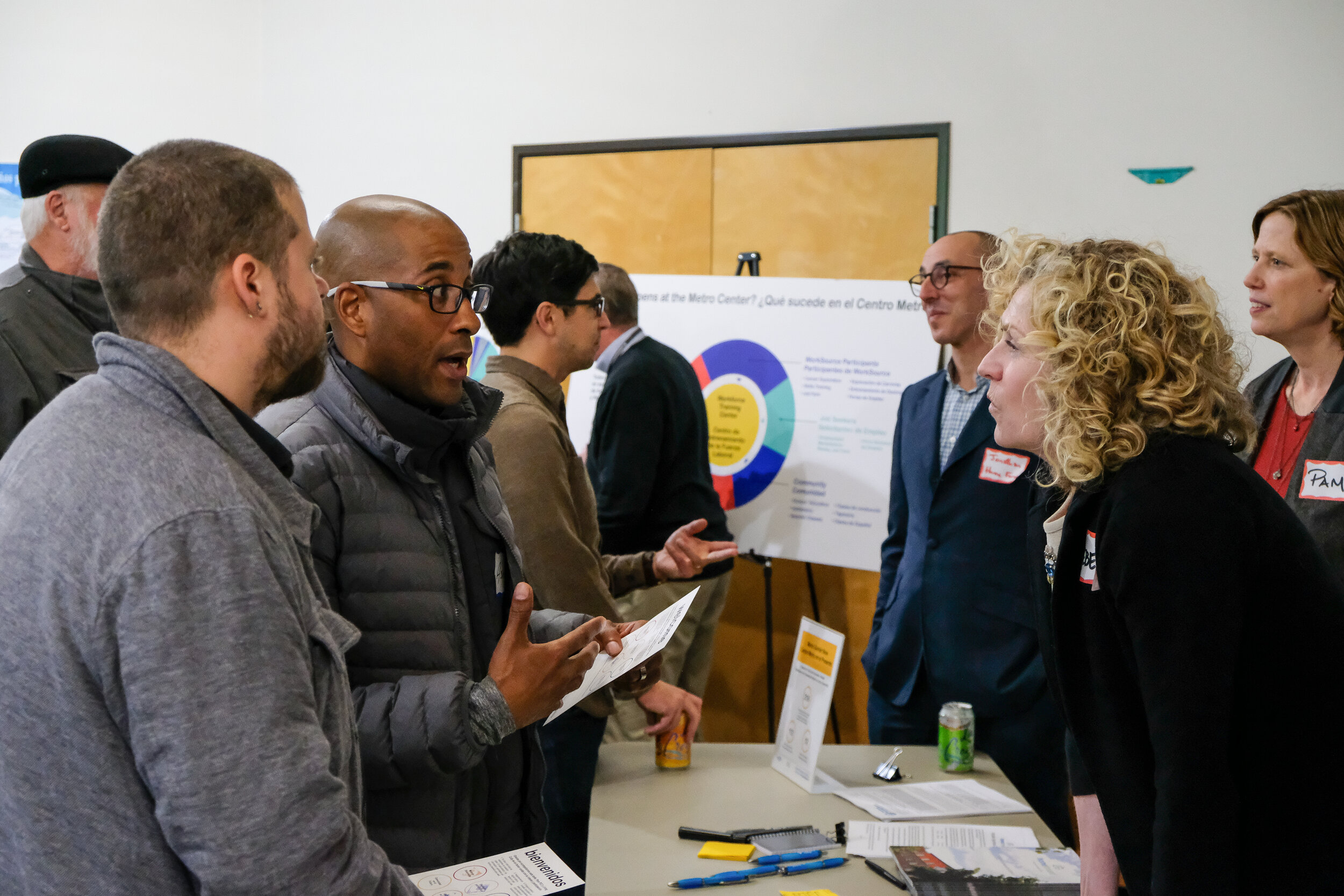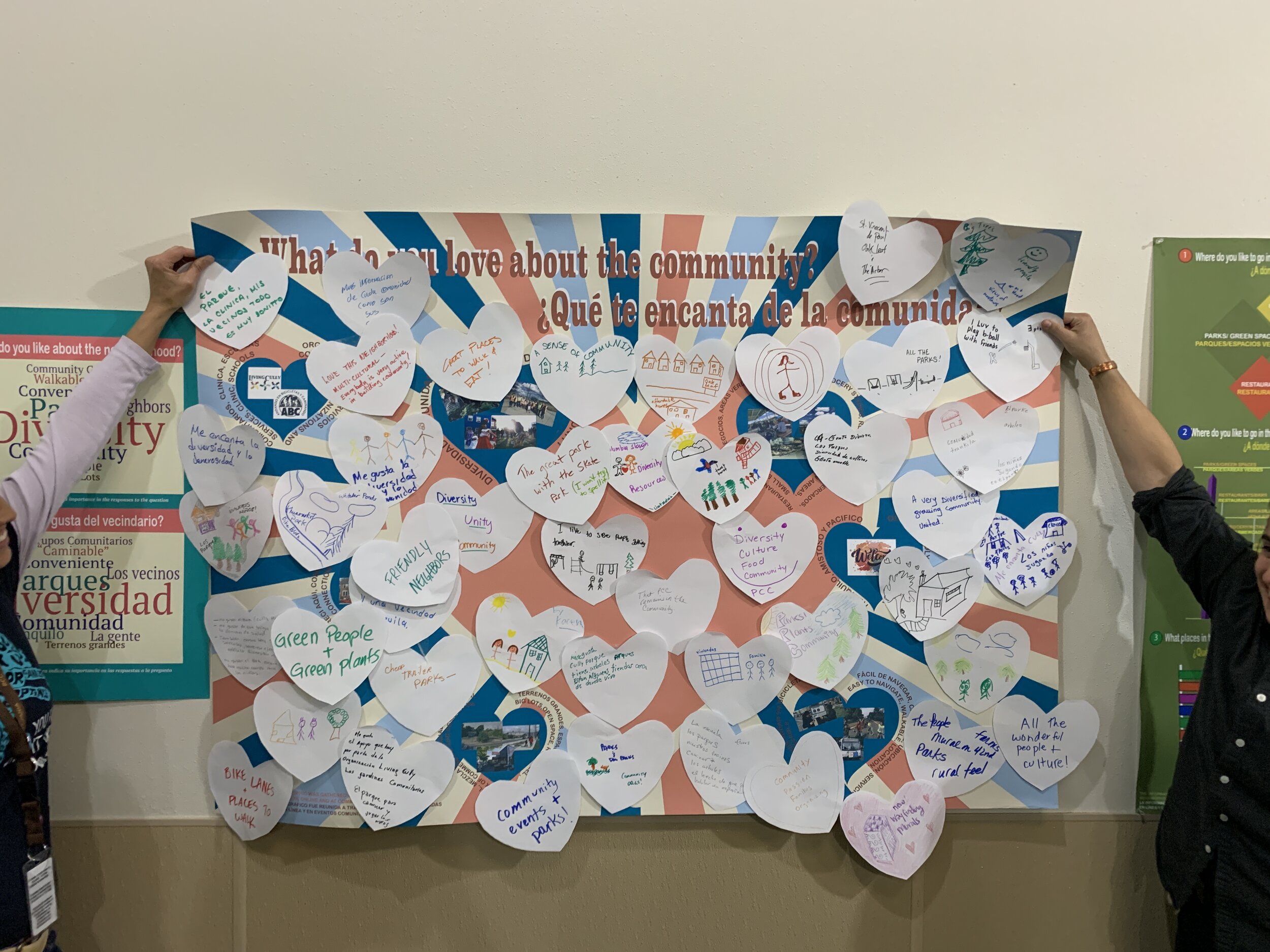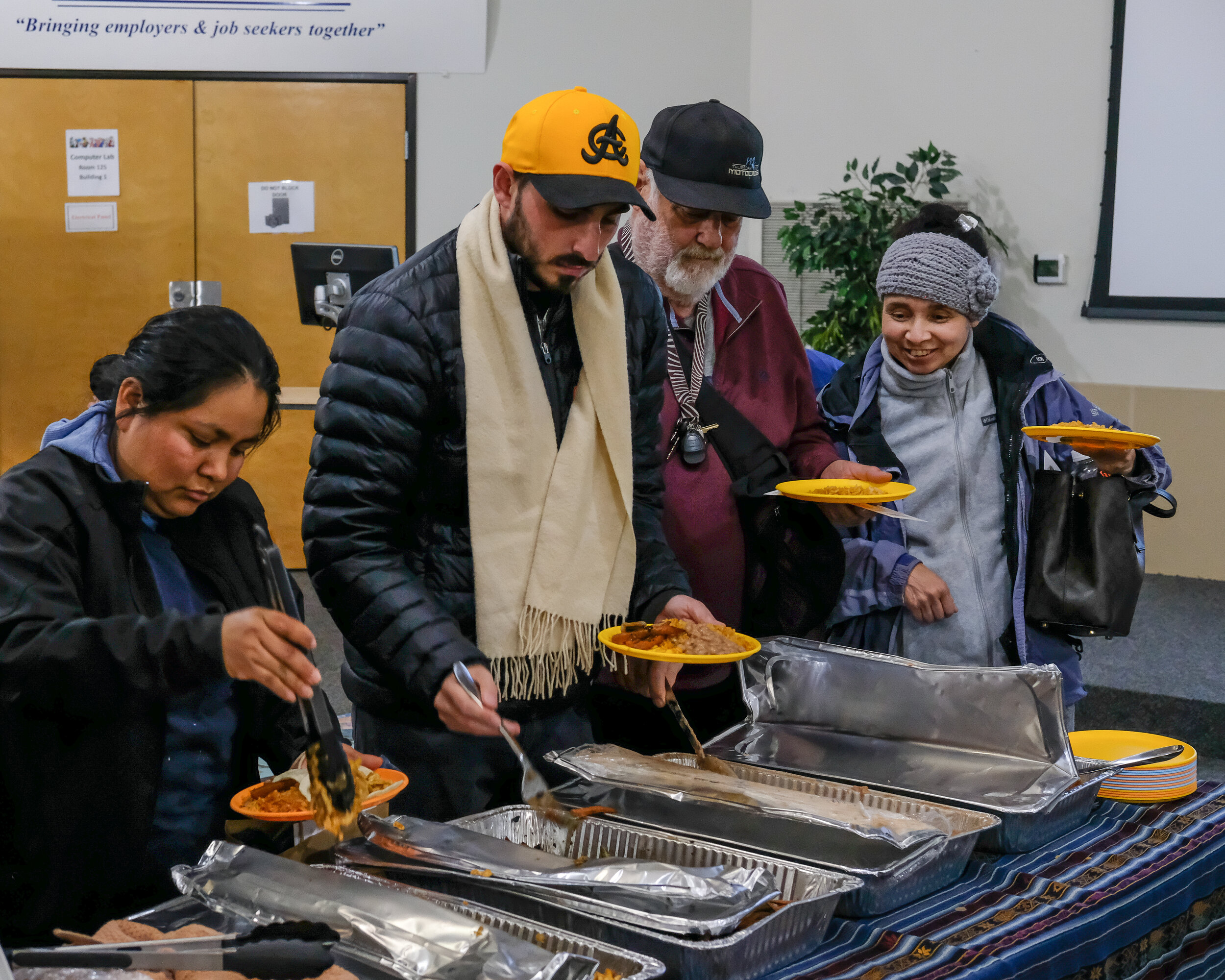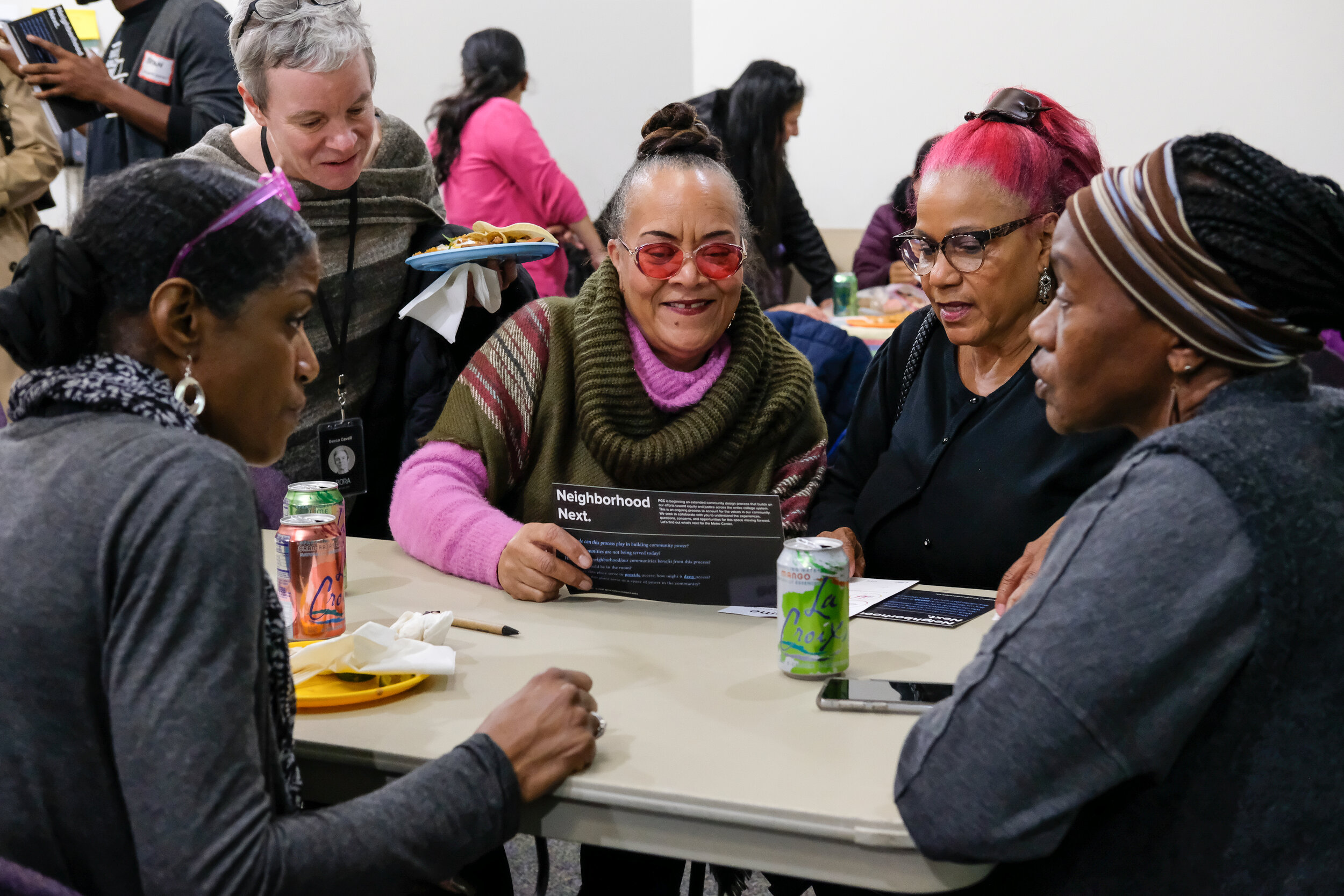PCC metro Center
Design Justice in Action
Location : Portland, Oregon
Client: Portland Community College
Year: 2019 - Present
Status: In Progress
Collaborators: Bora Architecture & Interiors, AB Cultural Drivers, Amara Pérez
The Portland Community College (PCC) Metro Center is a workforce training center in Portland, OR that will be an anchor for the community in Northeast Portland’s racially diverse Cully neighborhood. Replacing PCC’s existing facility, the expanded Center will be a beautiful, dignified space hosting education and job training opportunities for low-income families and residents. Amenities include mutual aid and community exchanges (libraries, pantries, basic needs exchanges), Art, Power and WiFi access points, and Sound-art for community members to tell stories about the neighborhood. Guided by trauma-informed design and Design Justice principles, Colloqate + Bora's work seeks to cultivate a culture of collective care by creating restorative and humanizing spaces that connect to nature and celebrate cultural diversity.
Design Process
Design Team Trainings
At the start of the design process, all design team members and consultants attended trainings on Critical Race Theory (CRT) and Design Justice (DJ), ensuring team members understand how CRT and DJ can make their work more equitable and can communicate effectively about CRT and DJ.
Open House
PCC and the design team hosted a kickoff open house in November 2019 that introduced the design team to local organizations, community members, and Metro Center staff, and was a chance for the team to have some initial casual conversations about experiences at the current Metro Center.
Outreach Plan
Our robust outreach and organizing process went from in-person open houses to virtual with the emergence of COVID-19. To ensure neighboring communities were proactively informed of project updates and engagement opportunities beyond virtual forums, Colloqate published two editions of a graphic newspaper detailing our progress. Each edition was mailed to approx. 10,000 households.
